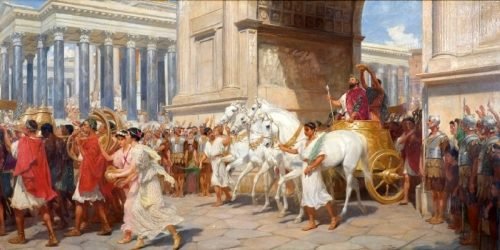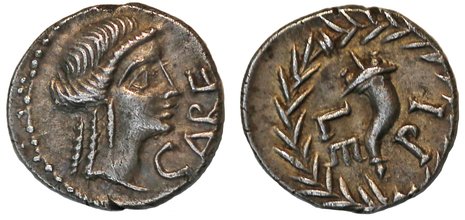The Stoics had a reminder for living fully—Memento Mori. It wasn’t meant to be grim. It was meant to wake you up—to cut through excuses, procrastination, and fear. In this post, we’ll uncover how remembering death can fuel urgency, sharpen focus, and free you to live with purpose. Ready to face mortality—and live stronger because of it? Let’s begin.
Table of Contents
⏰ Wake-Up Call
You are going to die. Everyone you know is going to die. Pretending otherwise doesn’t save you — it just wastes your time. Death isn’t something that happens to “other people” in some far-off future. It’s a certainty, and every day you live is one less you’ll ever have again.

Time is not on your side. Sooner or later, you’ll join them. The question is whether you’ll waste the days you’ve got left, or sharpen them into something that mattered.
👉 Memento mori is not about being morbid. It’s about sharpening life. It’s a slap across the face of complacency, a reminder that the sand is running through the hourglass whether you act or not.
🙈💀 Why We Avoid Death (and Why We Shouldn’t)
Modern life does its best to cover death up. We hide it behind closed hospital doors, sanitise it with euphemisms, and distract ourselves with endless noise to forget it’s coming.
But our ancestors didn’t play that game. They lived closer to the edge. Death was in the streets, in their homes, at the table. They couldn’t pretend otherwise, so they used it as a compass. For the Stoics, remembering death wasn’t gloom—it was fuel for living bravely.
When you stare death in the face, life sharpens. Priorities fall into place. The trivial fades. You stop living as though you’ll get a second run and start paying attention to the one chance you actually have.

In Rome, a triumphant general was reminded: ‘Remember you are mortal, remember you must die.’ Even at the height of glory, memento mori kept pride in check and focus sharp.
🧠☠️ The Core Idea
Memento mori means “Remember you must die.” The words sound grim, but the message is liberating. If you only have so much time, why waste it on gossip, bitterness, or endless scrolling?
The real enemy isn’t death — it’s the slow suffocation of a life wasted. When you accept mortality, fear loses its grip. You act, you speak, you live with urgency because you know every moment matters.

Whether it’s slouching away the days in comfort or scrolling endlessly through social media, these habits quietly steal the urgency of living fully. Memento mori is a reminder that life is too precious to lose to mindless distraction.
Marcus Aurelius put it best: “You could leave life right now. Let that determine what you do and say and think.”
📅⏳ How to Use Memento Mori Today
- Start the day with mortality in mind. Wake up and ask yourself: If today were my last, would I waste it?
- Keep a reminder near you. A symbol, tattoo, quote, or even a note on your desk: “You could leave life right now.”
- Cut the trivial. When faced with petty drama, excuses, or laziness — remember, the clock is ticking. Don’t give your time to what doesn’t matter.
- Act with courage. Say the words, chase the goal, train with intent. Tomorrow isn’t promised.

Life isn’t about drifting through days or dying with “what ifs.” It’s about living so hard and true that when death comes, you meet it without regret. Whether it’s greeting the morning with intent, chasing the world on your own terms, or putting in the work on the gym floor — memento mori is the reminder that every moment counts.
Seneca’s advice was simple: “Let us balance life’s books each day.” A clean ledger. Nothing left unsaid, nothing left undone.
⚰️🛶☠️ The Last Ride
Death doesn’t make life meaningless. It makes it urgent. Every breath is one step closer to the end — and that’s not something to fear, but to fuel you.
Don’t run from it. Let it light a fire under you. Live with courage, with purpose, with presence.
Am I wasting what I’ve been given?
Is this action worthy of the person I’m trying to become?

Death hangs over us all like a sword of Damocles — who knows which day will be your last? Squeeze every drop from life and training, give it your all.
“To practice death is to practice freedom. A man who has learned how to die has unlearned how to be a slave.”
– Montaigne
Appendices
Memento Mori Across Cultures 💀🌍🌎🌏
Want to go deeper? While the main post cuts to the core of memento mori, every culture has wrestled with death in its own way. From Roman generals to Samurai warriors, from Buddhist monks to Viking raiders — each found meaning, discipline, or courage in facing mortality.
Below, you’ll find an optional deep dive into how different traditions remembered death, and how their practices still echo today.
Table of Contents
⚱️ 🪦 💀Ancient Foundations – Death as Philosophy and Fate
The earliest civilizations didn’t shy away from mortality — they studied it, ritualised it, and built monuments around it. For the Greeks, Romans, and Egyptians, death wasn’t just an end but a doorway, a teacher, or a fate woven by unseen forces. These foundations shaped how humanity first learned to live with death as part of life.
Click on the links below for more.
🇬🇷🏺 Greece – Philosophy and the Ferryman
The Greeks didn’t shy from death — they studied it. Stoics like Seneca, Epictetus, and Democritus turned mortality into discipline. Seneca urged students to “balance life’s books each day,” Epictetus reminded them that loved ones were mortal, and Democritus even walked among tombs to steel himself. Death wasn’t gloom but fuel: a daily reminder to cut the trivial and live with courage.
Myth gave the lesson teeth. Souls faced Charon, the ferryman of the underworld, and were buried with a coin — Charon’s obol — as payment for the crossing. Placed in the mouth, hand, or chest, it symbolised preparation for the journey beyond. Archaeology shows the rite wasn’t universal, but the image endures: even the greatest hero must pay their fare to death.

💰 Charon’s Obol – coin placed with the dead to secure passage across the river of the underworld.
🏛️ Rome – Tombs, Symbols, and the Spectacle of Death
For the Romans, death was woven into daily life. Tombs lined the roads into every city, carrying blunt epitaphs aimed at the living: “What you are, I once was; what I am, you will be.” Another common line read: “I was not; I was; I am not; I care not.” Mortality wasn’t hidden in graveyards — it was carved into stone for every passerby to face.
Roman art carried the same reminder. Villas were decorated with mosaics of skulls, skeletons, and hourglasses, often placed in dining rooms. One famous mosaic shows a skull balanced on a wheel with a butterfly above — a symbol of fate, fortune, and the fleeting soul. Even in moments of feasting and laughter, Romans insisted guests remember that life was temporary.
 The Romans painted death beside celebration as a reminder — memento mori. Life is fleeting, so feast, fight, and live with meaning while you can.
The Romans painted death beside celebration as a reminder — memento mori. Life is fleeting, so feast, fight, and live with meaning while you can.
Philosophers reinforced the message. While the Stoics turned death into discipline, Epicureans like Lucretius taught that death was nothing to fear: “Death is nothing to us, since when we exist, death is not present, and when death is present, we no longer exist.” Whether through spectacle in the arena or symbols in art, Roman culture refused to let mortality slip from view.
🐫 Egypt – Death as Transition
For the ancient Egyptians, death wasn’t an end but a doorway. They had no word for “death” as ceasing to exist; instead, it marked a transition into the next phase of eternal life. The soul faced judgment before Osiris, and the worthy entered the Field of Reeds — a paradise where all that was lost in life was restored. Tombs, pyramids, and sarcophagi weren’t monuments to despair but to continuity, celebrating life while preparing for its impermanence. Their belief in the Ka (life force), Ba (personality), and Akh (united spirit) showed just how layered this vision of the afterlife really was.

Anubis weighed every heart against the feather of truth — a reminder that in the end, nothing escapes judgment. Live so your heart is light.
Rituals reinforced this view. At feasts, it was customary to raise a skeleton with a toast: “Drink and be merry, for such shalt thou be when thou art dead.” Ordinary Egyptians also lived with reminders of mortality: shabti figurines buried as servants for the afterlife, amulets, and spells from the Book of the Dead. These echoes across every class show that death wasn’t hidden but embraced — a constant presence reminding the living not to waste their brief spark of life.
🙏📿⛪🕌✡️ Religion, Death & Eternity – Preparing for the Hereafter
Across cultures, religions help people face death and prepare for what lies beyond. Through salvation, judgment, rebirth, or liberation, mortality stays central — not to crush the spirit, but to sharpen it. In this appendix, we’ll look at Christianity, Islam, and Buddhism, each of which developed powerful practices for meditating on death and the afterlife. Alongside them, Europe’s Danse Macabre shows how faith and art worked together to remind people that no one escapes the final reckoning.
Click on the links below for more.
✝️ Christianity – Death, Salvation, and the Afterlife
Christianity placed death at the centre of its vision of life. Cathedrals, tombs, and crucifixes carried reminders that every soul must face judgment, and art often urged believers to meditate on their mortality. With the growth of the faith, memento mori evolved into a spiritual practice: life on earth was fleeting, but the soul was eternal — destined for Heaven or Hell. To remember death was to live in readiness for salvation.
 For Christians, the crucifix and the rosary serve as more than symbols of faith — they are daily reminders of mortality, sacrifice, and the call to live with purpose before meeting God.
For Christians, the crucifix and the rosary serve as more than symbols of faith — they are daily reminders of mortality, sacrifice, and the call to live with purpose before meeting God.
Scripture reinforced this theme with blunt clarity. The Psalms remind us: “O remember how short my time is” (Psalm 89:46), and “The life of mortals is like grass… the wind blows over it and it is gone” (Psalm 103:15-16). Yet alongside this starkness lay comfort: “Even though I walk through the valley of the shadow of death, I will fear no evil” (Psalm 23:4). Christian culture fused the inevitability of mortality with the promise of redemption, turning death into both a warning and a source of hope.
💀🎻 Medieval Europe – The Danse Macabre
The Late Middle Ages were haunted by war and plague. The Black Death alone killed a third of Europe’s population, and endless conflicts like the Hundred Years’ War deepened the atmosphere of dread. From this backdrop emerged the Danse Macabre — the “Dance of Death.” Originating in the late medieval period and flourishing during the Renaissance, it depicted skeletons leading the living, from kings to beggars, in a grim parade to the grave.

Fresco of Danse Macabre from Ancient church of San Vigilio in Pinzolo, Italy.
These murals and frescoes lined church walls, a reminder that death spared no one. Whether rich or poor, young or old, all were equal in the skeletal procession. Death was often shown mocking human pride — dancing, laughing, or playing music as it claimed its victims. Famous works like the Triumph of Death fresco in Palermo and German Totentanz woodcuts carried the same message across Europe: mortality was the great leveler, and every soul would one day join the final dance.
☪️ Islamic Thought – Remembering the Destroyer of Pleasures
In Islam, tadhkirat al-mawt — the remembrance of death — has long been central to spirituality. The Qur’an reminds believers that “all that is on earth will perish” (55:26) and that “everyone shall taste death” (3:185). Death is seen not as an end but as a return of the soul to its Creator, with the afterlife as the true measure of success. Physical death should not be feared, but a life of moral corruption brings spiritual death — the far greater loss. Scholars like Al-Ghazali stressed that because death is unpredictable, a Muslim should live each day prepared for the Hereafter, with faith and righteous deeds as their safeguard.

“Death is your wedding with eternity.” — Rumi
Sufis took this reflection further. Known as ahl al-qubur — “people of the graves” — some sought wisdom by meditating in cemeteries, facing mortality directly to strip life of vanity. Poets like Rumi wove the same theme into their verses, turning death into a reminder to love fully, live humbly, and see beyond the temporary world. For Islam, memento mori is not morbid — it is a call to live in awareness, gratitude, and readiness for eternity.
🪷 Buddhism – Impermanence and Awareness
Buddhism treats death not as taboo, but as a teacher. The practice of maraṇasati (“death-awareness”) asks practitioners to meditate daily on mortality, sharpening the recognition that life is brief and fragile. As the Buddha put it: “Of all mindfulness meditation, that on death is supreme.” By reflecting on impermanence, Buddhists strip away illusions and ask whether they are truly using their time well. Death is not the end, but a step in the cycle of rebirth — shaped by karma, where past actions determine one’s future path. To die well means to live nobly: with kindness, honesty, and courage, so that fear has no hold when the moment comes.

The Buddhist Wheel of Life turns as a reminder that all beings move through birth, death, and rebirth — urging detachment, awareness, and the pursuit of liberation.
Tibetan Buddhism deepens this with the Lojong mind-training and the Bardo Thodol (The Tibetan Book of the Dead). Practitioners meditate on four truths: all things are impermanent, the body will perish, death is certain, and its timing is beyond control. The striking Citipati skull mask embodies this cycle of life and death, a reminder that nothing endures. Shantideva captured the urgency: “Death does not differentiate between tasks done and undone… it is like an unexpected, great thunderbolt.” In this view, to contemplate death daily is not morbid but liberating — dissolving ego, awakening presence, and transforming fear into wisdom.
⚔️ Death Before Dishonour – Warriors Who Embraced Mortality
For warrior cultures, fear of death was weakness — only dishonour was to be avoided. Spartans returned ‘with your shield or on it,’ Mongols rode knowing fate was sealed, Aztecs sought death in combat or sacrifice, Zulus fought without retreat, and Gurkhas still hold that it’s better to die than live a coward. For them, death measured worth: to embrace it was to fight freely and with honour. Two codes stood out for weaving death into daily life — the Samurai of Japan and the Vikings of the north.
Click on the links below for more.
🗡️🌸 Samurai – Bushido and the Practice of Death
In feudal Japan, the Samurai lived in a world of near-constant war, especially during the Sengoku period (1467–1615). For them, death was never abstract — it was daily reality. Out of this grew Bushidō, the “Way of the Warrior,” a code that demanded sincerity, loyalty, and above all, honour until death. Zen Buddhist influence sharpened this outlook, with the Hagakure declaring: “Rehearse your death every morning and night. Only when you constantly live as though already a corpse will you be able to find freedom in the martial Way.”
Honour outweighed life itself. If loyalty failed or disgrace loomed, warriors often chose seppuku (ritual suicide) to preserve dignity rather than suffer capture or shame. This wasn’t seen as defeat but as a final act of courage, proof that death embraced on one’s own terms was better than life in dishonour.

Samurai walked with death at their side — no hesitation, no fear. Prepared to die, he lived with absolute clarity and purpose.
Samurai also gave voice to death in art. Many composed jisei (death poems) before their final moments, reflecting on life’s transience without bitterness. Most compared themselves to the cherry blossom (sakura), brilliant at the moment before its fall. This imagery still colours Japanese culture today during hanami (flower-viewing), where the fleeting bloom reminds us — as it did the Samurai — that beauty and life are at their peak just before they pass.
🪓⚔️❄️ Vikings – Valhalla and the Fearless Death
For the Norse, death was not random but woven by the Norns, the spinners of fate. What mattered was not when you died, but how. A coward’s death of old age or apathy condemned one to Helheim, a cold, joyless realm ruled by the goddess Hel. The greatest reward, however, awaited those who fell in battle: Valhalla, Odin’s hall, where warriors feasted and fought for eternity. Others might reach Fólkvangr, ruled by Freya, or Helgafjell, the “holy mountain.” These beliefs made Vikings fearless in combat, for to die sword in hand was the surest path to glory.

For the Norseman, death in battle was no tragedy but the highest honour — the chance to be carried to Valhalla and sit at Odin’s table. This vision kept death ever-present, not as fear, but as purpose.
The Valknut, “knot of the slain,” symbolised this passage from life to death. Three interlocked triangles, associated with Odin, marked tombs and stones across Scandinavia, a reminder of the nine realms of Norse cosmology. After battle, Valkyries carried chosen warriors to Valhalla, while others joined Freya in Fólkvangr. Carrying this vision, Vikings entered combat without fear, eager for the death that proved their worth. In their culture, memento mori was not a grim whisper but a battle cry: death was inevitable, but the manner of it defined eternal destiny.
🎉💀 Celebration & Continuity – Death as Festival and Return
Not every culture meets death with silence or dread. Many turn remembrance into celebration, using ritual, food, music, and fire to honour the dead and connect the living with their ancestors. These festivals transform mortality into continuity, showing that love and memory endure beyond the grave.
In this section, we’ll look at three powerful examples: the Celtic festival of Samhain, Japan’s O-Bon, and Mexico’s Día de los Muertos — each a unique way of celebrating the presence of the dead among the living.
Click on the links below for more.
🍂🔥 Celtic Traditions – Samhain, Halloween and the Thin Veil
For the ancient Celts, death wasn’t final but a passage into the Otherworld — a realm of spirits, ancestors, and deities. They believed the boundary between the living and the dead was porous, especially during Samhain (October 31 – November 1), the festival marking summer’s end and the start of the dark half of the year. At this time, the veil between worlds was thought to thin, allowing the dead to walk among the living.

Samhain marked the thinning of the veil, when the dead drew close and the living faced their own mortality. What survives as Halloween once carried a darker weight — a seasonal reminder that death walks beside us all.
Communities lit great bonfires to ward off harmful spirits and honour the ancestors. People wore disguises to confuse wandering souls, a practice that evolved into Halloween costumes. Food and offerings were left out for the dead, both to appease them and to welcome their presence. In this way, mortality was neither denied nor feared: Samhain made death part of the cycle of seasons, a reminder that endings always give way to new beginnings.
💐💀 Mexico – Día de los Muertos
Mexico’s Día de los Muertos (Day of the Dead) turns mortality into celebration. Rooted in Aztec and Toltec traditions that saw death as part of life’s continuum, it rejects mourning as disrespectful. Instead, the dead are honoured as continuing members of the community, temporarily returning each year to join the living. Today’s festival blends ancient rites with Catholic feasts, taking place on November 1st and 2nd. Families build altars (ofrendas), adorned with flowers, candles, and food, and share pan de muerto (bread of the dead), sugar skulls, and gifts to welcome departed relatives.

Día de los Muertos turns death into remembrance and celebration — a reminder that life is brief, ancestors walk with us, and we honour them best by living fully.
The festival is as colourful as it is profound. Parades, dances, and painted skull masks fill the streets, showing that remembrance can be joyous rather than grim. A uniquely Mexican twist is the Calavera — witty poems written as if the living were already dead, often playful, sarcastic, or satirical. Shared among friends and even broadcast on radio, they mock death while embracing it, turning humour into a memento mori of its own. In Día de los Muertos, memory becomes celebration, and death becomes a reason to live fully.
🏮🕊️ Japan – O-Bon and the Returning Spirits
In Japan, the Buddhist festival of O-Bon honours the spirits of ancestors, who are believed to return each summer to visit the living. Families clean and decorate graves, light lanterns to guide the spirits home, and prepare offerings of food and incense. The festival ends with floating lanterns set adrift on rivers or seas, symbolically sending the spirits back to the other world.

Japan’s Obon festival welcomes ancestral spirits back among the living — lanterns, dances, and offerings reminding all that life is fleeting, and we carry the dead with us in how we live.
Communities also celebrate with Bon Odori — circle dances performed in colourful yukata around a raised platform, accompanied by drums and flutes. Far from being sombre, O-Bon is filled with joy, movement, and family gatherings. Like Samhain or Día de los Muertos, it turns mortality into connection, reminding people that the dead are never truly gone — they live on in memory, ritual, and the rhythm of community life.
✨ Final Reflection
Across cultures, whether through philosophy, faith, battle, or festival, the message is the same: death is unavoidable, but it gives life its urgency. To remember death is not to wallow in it — it’s to strip away illusions, live with courage, and honour the time you have.
If you have enjoyed this post please share or feel free to comment below 🙂
Related Posts
Our Other Posts





Fortune and Glory – The Indiana Jones Workout
Welcome to our Indiana Jones Workout, a tribute to the legendary archaeologist-adventurer. Dive into three





